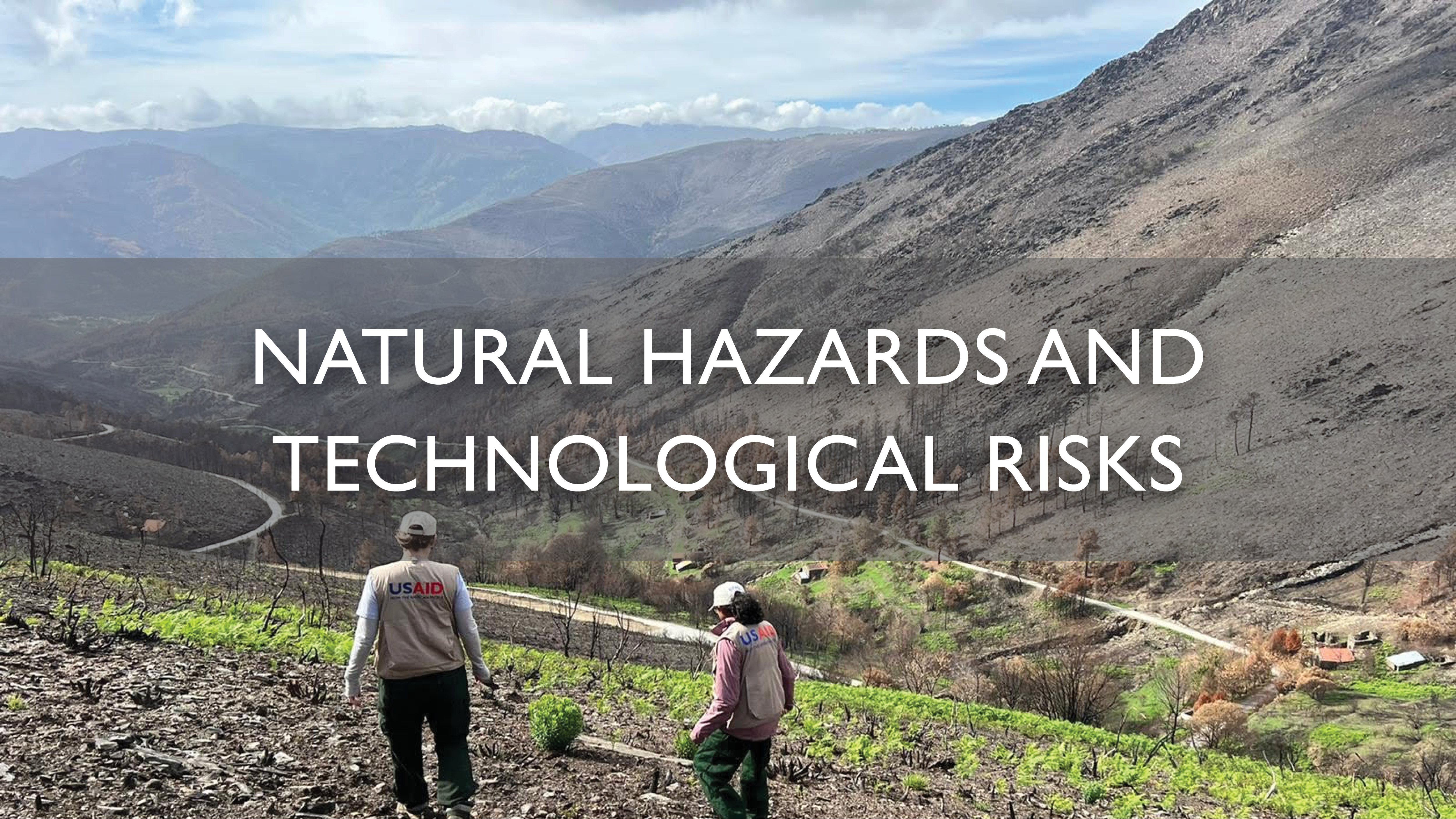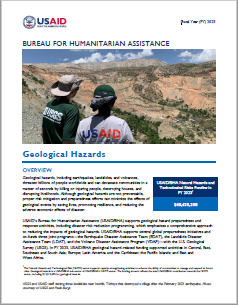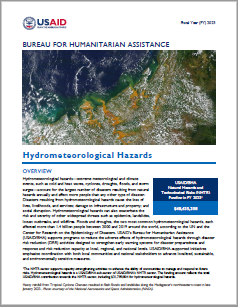
Geological Hazards
Geological hazards, including earthquakes, landslides, and volcanoes, threaten billions of people worldwide and can devastate communities in a matter of seconds by killing or injuring people, destroying houses, and disrupting livelihoods. Although geological hazards are not preventable, proper risk mitigation and preparedness efforts can minimize the effects of geological events by saving lives, promoting resilience, and reducing the adverse economic effects of disaster.
USAID’s Bureau for Humanitarian Assistance (USAID/BHA) supports geological hazard preparedness and response activities, including disaster risk reduction programming, which emphasizes a comprehensive approach to reducing the impacts of geological hazards. USAID/BHA supports several global preparedness initiatives and co-funds three joint programs—the Earthquake Disaster Assistance Team (EDAT), the Landslide Disaster Assistance Team (LDAT), and the Volcano Disaster Assistance Program (VDAP)—with the U.S. Geological Survey (USGS). In FY 2023, USAID/BHA geological hazard-related funding supported activities in Central, East, Southeast and South Asia; Europe; Latin America and the Caribbean; the Pacific Islands; and East and West Africa.
Hydrometeorological Hazards
Hydrometeorological hazards—extreme meteorological and climate events, such as cold and heat waves, cyclones, droughts, floods, and storm surges—account for the largest number of disasters resulting from natural hazards annually and affect more people than any other type of disaster. Disasters resulting from hydrometeorological hazards cause the loss of lives, livelihoods, and services; damage to infrastructure and property; and social disruption. Hydrometeorological hazards can also exacerbate the risk and severity of other widespread threats such as epidemics, landslides, locust outbreaks, and wildfires. Floods and droughts, the two most common hydrometeorological hazards, each affected more than 1.4 billion people between 2000 and 2019 around the world, according to the UN and the Center for Research on the Epidemiology of Disasters. USAID’s Bureau for Humanitarian Assistance (USAID/BHA) supports programs to reduce the adverse effects of hydrometeorological hazards through disaster risk reduction (DRR) activities designed to strengthen early warning systems for disaster preparedness and response and risk reduction capacity at local, regional, and national levels. USAID/BHA-supported initiatives emphasize coordination with both local communities and national stakeholders to advance localized, sustainable, and environmentally sensitive measures.


